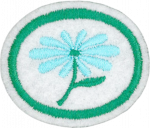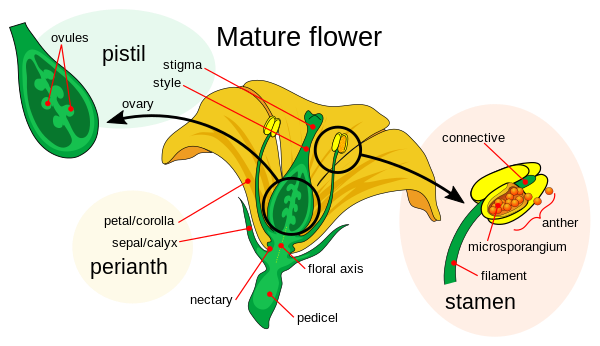Difference between revisions of "AY Honors/Flowers/Answer Key/es"
(Created page with "</noinclude>") |
(Created page with "</noinclude>") |
||
| Line 119: | Line 119: | ||
{{ansreq|page={{#titleparts:{{PAGENAME}}|2|1}}|num=6c}} <!--T:27--> | {{ansreq|page={{#titleparts:{{PAGENAME}}|2|1}}|num=6c}} <!--T:27--> | ||
<noinclude></noinclude> | <noinclude></noinclude> | ||
| − | |||
<noinclude></noinclude> | <noinclude></noinclude> | ||
Revision as of 17:47, 24 February 2021
| Flores | ||
|---|---|---|
| Asociación General
|
Destreza: 2 Año de introducción: 1928 |
|
Requisitos
| Conexión Logros para la Investidura: Esta especialidad está relacionada con los requisitos de Logros para la Investidura para ORIENTADOR DE NUEVAS FRONTERAS Estudio de la naturaleza que requiere (como una de dos opciones) dibujar, fotografiar o coleccionar fotos de 20 clases de flores similar al requisito #1 de esta especialidad. Esta especialidad es una elección popular para la especialidad de la categoría de Estudio de la naturaleza de nivel de destreza 2 o 3 requerido para los ORIENTADORES DE NUEVAS FRONTERAS. |
1
This website http://www.realtimerendering.com/flowers/flowers.html can help you identify flowers by entering in the answers to several questions. It would be a good idea to print out the form and take copies with you into the field. Some of the questions are difficult to answer unless you have the plant right in front of you.
2
- Pistil
- The pistil is the female portion of the flower located at the center of the blossom. It consists of the style, stigma, and ovary.
- Stamen
- The stamen is the male portion of the flower, and it is clustered around the pistil. It includes the filament and anther. Most flowers have multiple stamens.
- Petal
- Also known as the corolla, the petals enclose the reproductive organs of a flowering plant. They are often brightly colored to attract pollinators, and lend beauty to the plant.
- Sepal
- Also known as the calyx, the sepal encloses the flower when it is in bud form. When the sepals open, the petals are revealed. They are often (but not always) green and leafy-looking.
3
4
- A seed needs warmth and water to grow roots.
- The flower sprouts up and down at the same time, send a shoot upwards, and a root downwards.
- The flowers grow more leaves.
- The blossoms open.
- Bees and other insects pollinate the flowers.
- The flowers form seeds.
- The seeds are dispersed and take root.
- The cycle repeats.
5
6
6a
!style="background:yellow" align=left|
- Goldenrod
- Daffodil
- Dandelion
- Butter-and-eggs
- Evening Primrose
- Sunflower
6b
6c
6d
- 1. Birds:
- 2. Honeybees:
- 3. Bumblebees:
- 4. Butterflies:
- 5. Moths:
It may be necessary to use a pair of binoculars for this requirement, as birds are highly unlikely to visit any flower a Pathfinder is hovering over. Hummingbirds are the most likely avian visitors you will see visiting a flower for food. Bumblebees can be distinguished from honey bees by their size (bumblebees are two or three times larger).
6e
This can be an excellent activity for a campout. The post-dusk observations are quite suitable as a vespers activity, and the daytime observations work well during the Sabbath morning services.
Compare this requirement with requirement 7 of the Shrubs honor.
References
- Categoría: Tiene imagen de insignia
- Adventist Youth Honors Answer Book/Honors/es
- Adventist Youth Honors Answer Book/es
- Adventist Youth Honors Answer Book/Skill Level 2/es
- Categoría: Libro de respuestas de especialidades JA/Especialidades introducidas en 1928
- Adventist Youth Honors Answer Book/General Conference/es
- Adventist Youth Honors Answer Book/Nature/es
- Adventist Youth Honors Answer Book/Nature/Primary/es
- Adventist Youth Honors Answer Book/Stage 0/es
- Adventist Youth Honors Answer Book/IAConnection/es
- Adventist Youth Honors Answer Book
- Adventist Youth Honors Answer Book/Do at home



